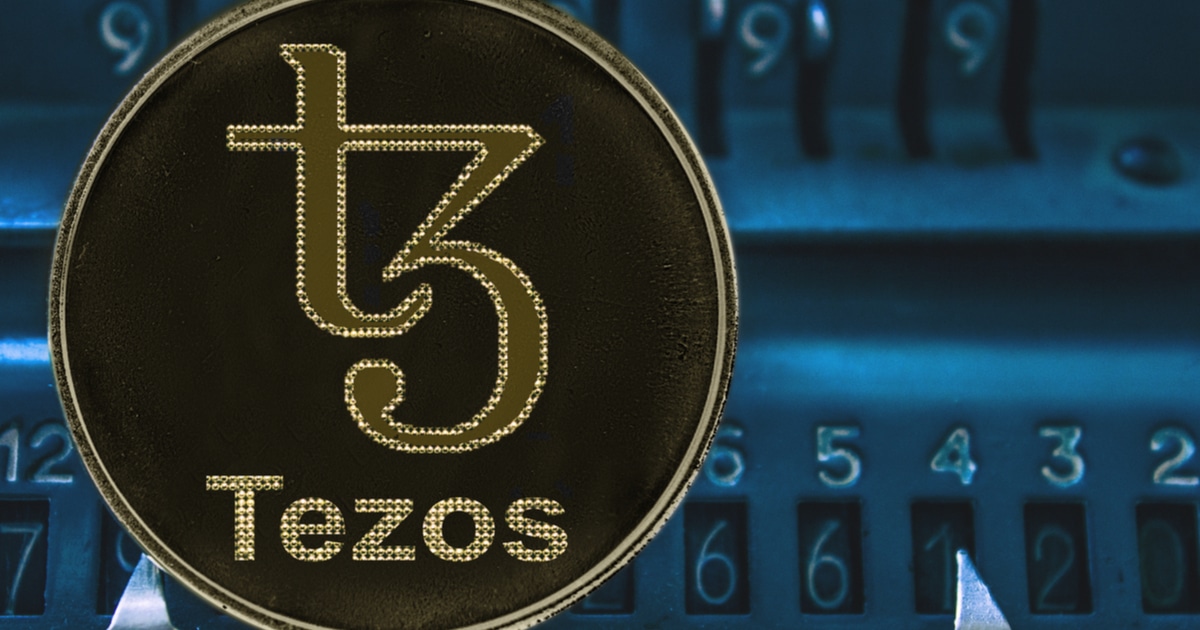Davos Protocol is a low-risk, yield-generating, stable asset-driven DeFi ecosystem that addresses the issues of transparency, capital inefficiencies and increasing centralization currently prevalent in the stablecoin space. Recently, we caught up with Julian Hayward, co-founder and CBDO of Davos Protocol and asked him a few questions.
Q: Can you tell us what it is staking, and what are its differences from liquid staking?
A: Staking is a process that is responsible for securing Proof-of-Stake (PoS) blockchains. In a decentralized ecosystem where network participants are in charge of validating transactions and maintaining the continuity of the blockchain, staking serves as a security deposit where the staker locks a certain amount of the protocol’s native token over a period of time to be able to contribute towards network functions. In return for their contributions towards securing the network, the protocol awards stakers in the form of additional tokens in the form of staking interest and block rewards.
A much broader definition of staking in crypto space involves any practice where a user locks their assets on a smart contract for a certain period as a contribution to the protocol’s functioning and gets rewarded for the same. For example, the practice of providing liquidity on a DeFi platform is also generally referred to as staking even though the staked assets do not play any role in securing the platform but rather help in its smooth functioning.
Liquid staking is a concept popularized by the introduction of Ethereum 2.0 where users stake their assets to secure the native protocol, but with one major difference. The conventional staking process comes with a lock-in period during which the user can’t withdraw their stake, whereas liquid staking doesn’t enforce such restrictions, except for a short bonding/unbonding period. Further, liquid staking contracts issue an equivalent amount of tokens representing the user’s stake in the protocol, which can be used to generate yields additional to staking rewards on other DeFi protocols. At any time a user wants to withdraw their staked assets, all they have to do is return the derivative tokens in exchange for staked assets on liquid staking protocols.
The issue and recognition of these derivative tokens across protocols ensure that stakers can put them to use on DeFi yield farming applications to generate returns while the actual underlying asset is locked in a liquid staking contract. Liquid staking overcomes the issue of capital inefficiency due to locked assets, as in the case of conventional staking.
Q: Can you describe Davos’ liquid staking model and its operation behind the scenes? Is there a difficulty curve for inexperienced users?
A: Our operation is reliant on the low-risk MATIC liquid staking strategy. Currently, we route user funds that are deposited as MATIC tokens to Ankr Protocol’s liquid staking service. The user funds are collateral deposited in our smart contracts to obtain our DAVOS Stable Asset.
The liquid staking rewards coming our way from Ankr on a weekly basis are deposited in the Davos Revenue Pool. In addition to that, the interest paid by users taking out DAVOS positions also gets routed to our revenue pool. With these measures in place, our revenue pool generates considerable returns used to incentivize DAVOS stakers and liquidity providers for their efforts, thanks to the ingenuity behind all the facets of our operation.
DAVOS borrowers can, thus, gain risk-free yields by committing to the incentive-producing opportunities that we offer. The difficulty curve associated with our platform for inexperienced users is relative to understanding how staking, liquid staking, and yield-generation work. We suggest everyone understand these concepts before indulging in anything related to them. Beyond that, our dApp is designed to be user-friendly and make it as easy as possible for anybody wanting to indulge in our array of use cases.
Q: Which model, staking and liquid staking, offer the most benefits to the users? Why?
A: Of course, liquid staking overcomes the boundaries present with regular PoS staking. Think of it like this – liquid staking is the new and improved version of the legacy staking model. This is simply because the funds staked with liquid staking services are reward-generating and liquid. Users now possess the ability to do more with the funds they use to secure PoS blockchains. With liquid staking, they can witness yields amounting to much more than PoS staking rewards. Additionally, they can turn to DeFi’s potential and stack up profits earned from several layers of farming activity.
Q: The Davos platform allows users to earn yield farming rewards and additional income from their revenue pool. How can users leverage these features?
A: As a revolutionary DeFi ecosystem, our platform is bringing users the ability to rely on our risk-free earning capabilities. The revenue accumulating in our ever-growing revenue pool is used for incentivizing DAVOS holders interested in participating in our DeFi implementations.
Our platform offers users a DAVOS staking pool which, when interacted with, can potentially earn them highly attractive yields. Users can stake their DAVOS Stable Assets here and collect a constant stream of yields varying between 7% and 9% APY.
Otherwise, they can choose to provide liquidity to DAVOS liquidity pairs on DEXs like Uniswap and Quickswap to earn yield-bearing liquidity provision (LP) tokens. These tokens will, obviously, grow in value as a reward for participating in keeping DAVOS liquid and furthering its adoption across the DeFi landscape. Furthermore, users can deposit LP tokens on our boosted vaults to earn attractive double-digit APYs.
These rewards are made possible for our users by leveraging the value we generate in our revenue pool.
Q: Why use Polygon to launch a side chain? Why not rely on Ethereum directly? Are there advantages for the users?
A: We are looking to bring the best experience possible while being able to cater to a huge number of users. Presently, we find that Polygon is highly efficient in processing transactions while maintaining low gas prices. Thus, it is a more scalable solution. Nevertheless, Ethereum is still a very reliable option. But the high amount of congestion on the network could translate to poor transaction turnaround times and increased gas fees for our users. Reliance on Polygon makes using our platform so much more feasible at the moment.
Beyond that, Polygon is highly secure, experiences great developer interaction, and its native token holds strong despite market turbulence – inculcating some of Ethereum’s best features while overcoming the network’s pitfalls. Therefore, with Polygon, users will witness rapid transaction settlements, reduced network fees, and robust security.
That’s not to say that Davos will not turn to Ethereum. We will accept ETH as collateral and adapt our functionalities to the Ethereum blockchain in the future. With the likes of sharding getting introduced to Ethereum soon, we are excited to be a part of the developments witnessed on the network. Likewise, we plan on doing the same with other blockchain networks, too, to harness the best of a cross-chain ecosystem.
Q: We understand Davos will launch a stablecoin on Polygon; what’s the main difference between this digital asset and others in the crypto industry, and what’s the potential for the long-term adoption of DeFi?
A: The DAVOS Stable Asset is our answer to the woes currently present with stablecoin implementation. The issues with present stablecoins are threefold.
Centralized stablecoins are, well, centralized. With so much control revolving around the entities that manage the stablecoins, things can go south quickly. Take the recent USDC fiasco for example, banking issues led to the asset’s value de-pegging from the dollar. On the other hand, decentralized stablecoins face other issues. The overcollateralized kind is capital inefficient because users lock up more value than they can use with the stablecoin. Undercollateralized and uncollateralized stablecoins are the shakiest with their pegs.
The difference between DAVOS and other stablecoins is that our creation overcomes the stablecoin trilemma. Thanks to our liquid staking implementation and reward-generating measures, we can offer a stablecoin that is capital efficient while remaining overcollateralized and, thus, highly stable. DAVOS is also fully decentralized and transparent; every aspect of its operations remains on-chain and relies on smart contracts. It is the first stablecoin that pulls off being decentralized, capital efficient, and truly stable at the same time.
Because of the benefits propagated by the asset as a stablecoin and a central aspect of its DeFi ecosystem, we are confident that users will turn to our offerings in massive numbers. Whether it is to store and transfer value stably or to channel DeFi’s capacities while averting risk completely, we have everything covered.
Q7: In the future, with more and more decentralized applications (dApps) launching in the crypto space, do you believe a liquid staking model will be the new normal?
A: Yes, liquid staking will be the new normal with more dApps getting introduced to the crypto landscape. Because PoS staking is such a vital component of blockchain ecosystems, it is only natural for its staking successor to witness mass adoption within the industry.
More users will choose to secure their favorite networks this way. Moreover, the implications of liquid staking will definitely draw more users to participate in network maintenance, making blockchain ecosystems all the more robust. dApps will also turn to liquid staking applications to utilize the capital efficiency it breeds, offering their users low-risk reward-generating opportunities. Davos protocol is already tapping into the benefits and is offering one-of-a-kind use cases to users.
The liquid staking model has tremendous potential that will bleed into all aspects of DeFi and crypto.
Q8: In the future, will cross-chain capabilities be mandatory for all crypto and DeFi projects?
A: As blockchain technology matures, it is becoming evident that cross-chain interoperability is where the future lies. There is so much development on various networks and remaining siloed on one of them does not make any sense. In fact, several protocols are already going the cross-chain route and are using interoperability solutions like bridges and token wrapping to achieve cross-chain capabilities. As a result, users from many networks can now easily access the same use cases.
Davos protocol, too, is conscious of the need for cross-chain presence. We are working on implementing our ecosystem and all the solutions it brings to networks beyond Polygon. Ethereum and Avalanche are networks we look to branch out to at the earliest. We are confident that with improving cross-chain solutions, we will find ourselves on various other networks, allowing users to acquire DAVOS with any popular PoS cryptocurrency. Furthermore, they will be able to take their DAVOS Stable Asset holdings to the networks they please.
&
&
&

You can get bonuses upto $100 FREE BONUS when you:
💰 Install these recommended apps:
💲 SocialGood - 100% Crypto Back on Everyday Shopping
💲 xPortal - The DeFi For The Next Billion
💲 CryptoTab Browser - Lightweight, fast, and ready to mine!
💰 Register on these recommended exchanges:
🟡 Binance🟡 Bitfinex🟡 Bitmart🟡 Bittrex🟡 Bitget
🟡 CoinEx🟡 Crypto.com🟡 Gate.io🟡 Huobi🟡 Kucoin.




















Comments